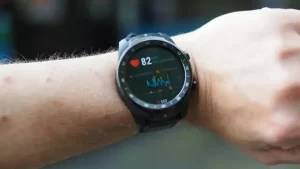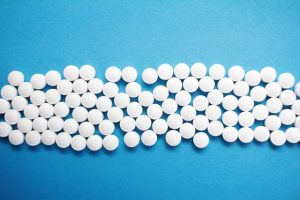Positive Phase 2a Clinical trail Results of BDNF Therapy for Hearing Loss
- Statins Lower Blood Lipids: How Long is a Course?
- Warning: Smartwatch Blood Sugar Measurement Deemed Dangerous
- Mifepristone: A Safe and Effective Abortion Option Amidst Controversy
- Asbestos Detected in Buildings Damaged in Ukraine: Analyzed by Japanese Company
- New Ocrevus Subcutaneous Injection Therapy Shows Promising Results in Multiple Sclerosis Treatmen
- Dutch Man Infected with COVID-19 for 613 Days Dies: Accumulating Over 50 Virus Mutations
Positive Phase 2a Clinical trail Results of BDNF Therapy for Hearing Loss
- Red Yeast Rice Scare Grips Japan: Over 114 Hospitalized and 5 Deaths
- Long COVID Brain Fog: Blood-Brain Barrier Damage and Persistent Inflammation
- FDA has mandated a top-level black box warning for all marketed CAR-T therapies
- Can people with high blood pressure eat peanuts?
- What is the difference between dopamine and dobutamine?
- How long can the patient live after heart stent surgery?
Positive Phase 2a Clinical trail Results of BDNF Therapy for Hearing Loss.
A few days ago, Otonomy announced that its investigational therapy OTO-413 has achieved positive top-line results in a Phase 2a clinical trial in subjects with hearing loss.
Trial results showed that a single intratympanic injection of 0.3 mg of OTO-413, a brain-derived neurotrophic factor formulation with sustained drug exposure, demonstrated clinical benefit compared with placebo on multiple hearing efficacy endpoints.
This trial supports the efficacy previously observed in a Phase 1/2 clinical trial.
Recent scientific advances have shown that the loss of synaptic connections between inner ear hair cells and auditory nerve fibers can lead to hearing impairment.
This cochlear synapse lesion is thought to be a potential cause of age-related and noise-induced hearing loss, and may be responsible for difficulties in recognizing speech in the presence of background noise.
OTO-413 is a unique formulation of brain-derived neurotrophic factor (BDNF). BDNF is a natural protein involved in neuronal growth and repair. Nonclinical studies have shown that topical administration of BDNF repairs synaptic connections between inner cochlear hair cells and auditory nerve fibers damaged by noise trauma or exposure to ototoxic chemicals.
In addition, Otonomy has demonstrated in preclinical studies that repair of synaptic connections is associated with restoration of hearing function.
The unique formulation of OTO-413 allows it to maintain continuous drug exposure in the inner ear for a long time after a single injection, thereby reducing the number of injections and improving the efficacy.
Results of the randomized, double-blind, placebo-controlled Phase 2a clinical trial announced by Otonomy showed that a single intratympanic injection of OTO-413, compared with placebo, resulted in significantly more benefit on days 57 and 85 post-treatment. A hearing test provides clinically meaningful therapeutic benefit.
For example, 40% of patients treated with OTO-413 achieved clinically meaningful improvement in at least one of the three speech-in-noise (SIN) hearing tests, compared with 20% of patients in the control group.
50% of patients treated with OTO-413 achieved a clinically meaningful improvement in the Global Impression Change Scale (PGIC) measure, compared with 10% of the control group.

The efficacy index results of OTO-413 (Image source: Otonomy’s official website)
Based on these positive results, Otonomy plans to initiate a full dose-ranging Phase 2 clinical trial in hearing loss patients by the end of 2022.
References:
[1] Otonomy Reports Positive Top-Line Results from Phase 2a Clinical Trial of OTO-413 in Patients with Hearing Loss. Retrieved April 20, 2022, from https://investors.otonomy.com/news-releases/news-release-details/otonomy-reports-positive-top-line-results-phase-2a-clinical
Positive Phase 2a Clinical trail Results of BDNF Therapy for Hearing Loss
(source:internet, reference only)
Disclaimer of medicaltrend.org
Important Note: The information provided is for informational purposes only and should not be considered as medical advice.



